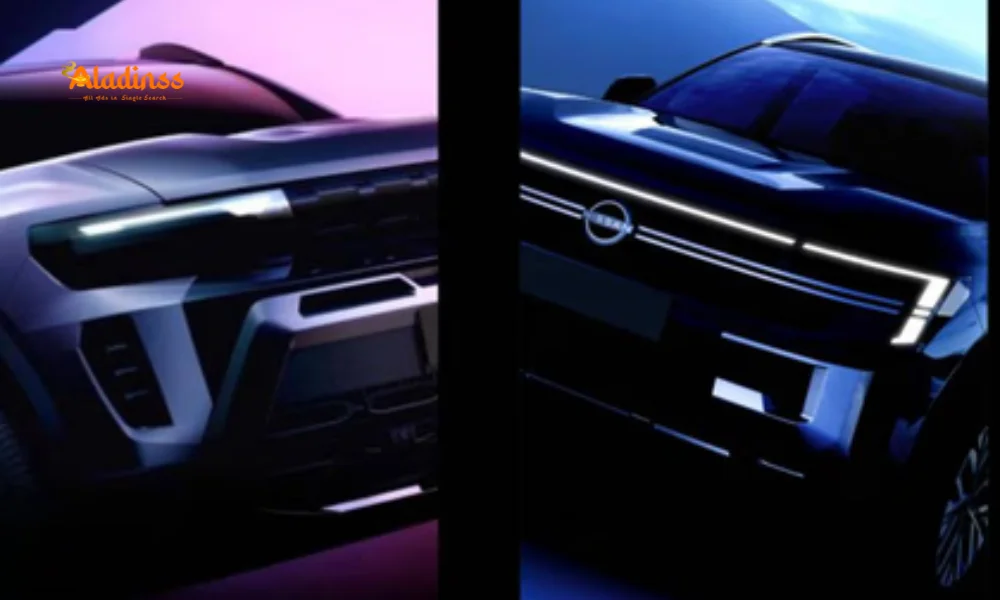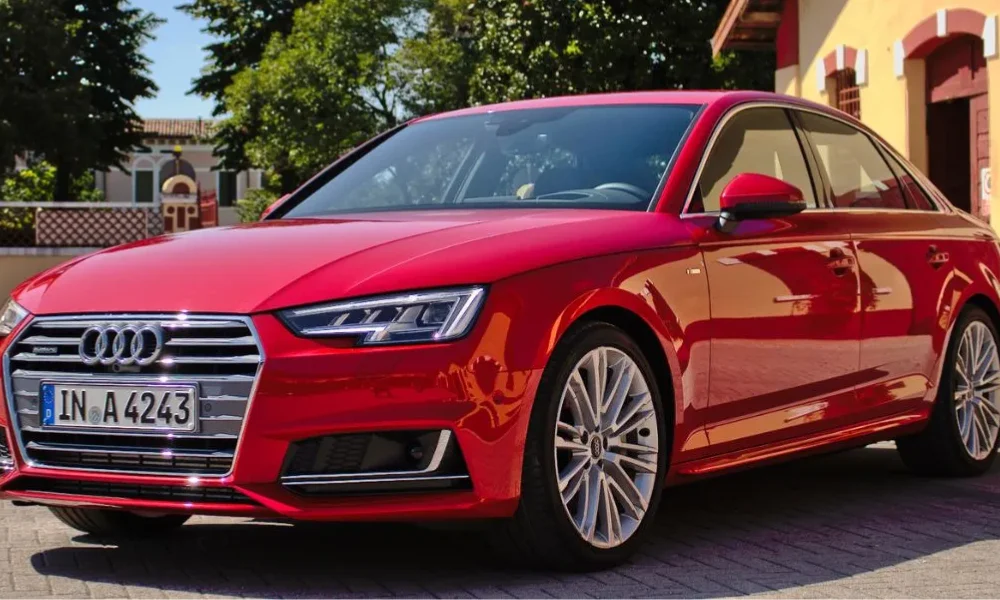Mahindra Thar Roxx Prices Slashed by Up to Rs 1.33 Lakh Post-GST Cut

Mahindra Thar Roxx Prices Slashed by Up to Rs 1.33 Lakh Post-GST Cut
Mahindra & Mahindra has announced significant price reductions for the Thar Roxx, with savings of up to Rs 1.33 lakh, following the GST 2.0 reforms effective from September 6, 2025. The revised Goods and Services Tax (GST) structure, approved at the 56th GST Council meeting, has prompted automakers to pass on tax benefits to customers, making popular SUVs like the Thar Roxx more affordable. This move comes as a festive season boost, aligning with high demand during Navratri and Diwali. This SEO-optimized article details the variant-wise price cuts, revised tax slabs, and their impact on buyers, ensuring readability and relevance for automotive news enthusiasts.

Mahindra’s Swift Response to GST Reforms
Unlike some automakers who will implement price reductions from September 22, 2025, Mahindra has proactively applied the GST benefits from September 6, 2025, across its internal combustion engine (ICE) SUV portfolio, including the Thar Roxx. This immediate action, announced by Mahindra Group Chairman Anand Mahindra, underscores the company’s commitment to affordability. The Thar Roxx, a 5-door SUV launched in 2024, has gained popularity for its rugged design and off-road capabilities, and these price cuts are expected to further boost its appeal during the festive season.

Variant-Wise Price Reductions for Thar Roxx
Mahindra has shared the extent of savings for each Thar Roxx variant, reflecting the revised GST rates. While exact ex-showroom prices may vary based on engine (petrol or diesel) and gearbox (manual or automatic), the table below outlines the maximum benefits per variant. Buyers are advised to contact their nearest Mahindra dealership for precise pricing details, as savings depend on the chosen configuration.
| Variant | Previous GST Rate + Cess | New GST | Full GST Benefits |
|---|---|---|---|
| MX1 | 48% | 40% | Rs 81,200 |
| MX3 | 48% | 40% | Rs 1.01 lakh |
| AX3 L | 48% | 40% | Rs 98,300 |
| MX5 | 48% | 40% | Rs 1.10 lakh |
| AX5 L | 48% | 40% | Rs 1.22 lakh |
| AX7 L | 48% | 40% | Rs 1.33 lakh |
The top-spec AX7 L variant, available in diesel-automatic and 4WD configurations, offers the highest savings, making it an attractive option for buyers seeking premium features.
Why the Price Drop?
The price reductions stem from the GST 2.0 reforms, which simplified tax slabs for vehicles. Previously, the Thar Roxx, classified as a vehicle over 4,000 mm with an engine capacity exceeding 1,500 cc, was taxed at 28% GST plus a 20% compensation cess, totaling 48%. The new flat 40% GST rate eliminates the cess, resulting in an 8% tax reduction. The table below summarizes the tax changes for the Thar Roxx’s engine options.
| Engine | Old Tax (Including Cess) | New Tax | Savings |
|---|---|---|---|
| Petrol | 48% | 40% | 8% |
| Diesel | 48% | 40% | 8% |
This tax reduction applies to both the 2-litre turbo-petrol and 2.2-litre diesel engines, available with 6-speed manual or automatic transmissions, and rear-wheel or 4WD configurations.

Thar Roxx: Features and Appeal
The Mahindra Thar Roxx, a 5-seater SUV, blends rugged styling with modern features, making it a favorite among off-road enthusiasts and urban buyers alike. Its boxy design, LED headlights, and 19-inch alloy wheels give it a distinctive look, while the interior offers a premium white-black or brown-black (4WD models) color scheme. Key features include a 10.25-inch touchscreen, a 9-speaker Harman Kardon audio system, a panoramic sunroof, and ventilated front seats. With price cuts now in effect, the Thar Roxx’s starting price of Rs 12.99 lakh (ex-showroom) for the MX1 variant makes it a compelling option against rivals like the Hyundai Creta and Maruti Grand Vitara.
Festive Season Timing
Mahindra’s decision to implement price cuts ahead of the official September 22, 2025, GST revision date positions the Thar Roxx as a top choice during the festive season. Navratri, starting September 22, and Diwali are peak periods for car purchases in India, and the reduced prices are likely to drive demand. Mahindra reported a 77% year-on-year sales growth for the Thar nameplate in June 2025, with 9,850 units dispatched in August 2025, indicating strong market interest. Buyers should book early to avoid wait times of up to two months, as reported in August 2025.

How the GST Reforms Impact the Market
The GST 2.0 reforms, chaired by Finance Minister Nirmala Sitharaman, have simplified tax slabs into two main categories: 18% for smaller vehicles and 40% for larger SUVs and luxury cars. This overhaul removes the compensation cess, reducing the effective tax rate for vehicles like the Thar Roxx from 48% to 40%. Other automakers, such as Toyota (Fortuner, up to Rs 3.49 lakh cut) and Tata Motors (Nexon, up to Rs 1.55 lakh cut), have also passed on benefits, intensifying competition in the SUV segment. The reforms aim to stimulate demand, supporting India’s automotive industry, which contributes significantly to economic growth.
How to Avail the Savings
To take advantage of the Thar Roxx price cuts, Mahindra advises customers to contact authorized dealerships for variant-specific pricing and booking details. The savings, ranging from Rs 81,200 for the MX1 to Rs 1.33 lakh for the AX7 L, apply to bookings and deliveries from September 6, 2025. Dealerships may offer additional festive discounts or financing options, enhancing affordability. With high demand expected, early bookings are recommended to secure delivery before the festive rush.
Why Choose the Thar Roxx?
The Thar Roxx stands out for its blend of off-road prowess and modern amenities. Available in seven colors—Everest White, Stealth Black, Nebula Blue, Battleship Gray, Deep Forest, Tango Red, and Burnt Sienna—it appeals to diverse tastes. Its ARAI mileage ranges from 12.4 to 15.2 kmpl, balancing performance and efficiency. With prices now starting at Rs 12.99 lakh and savings of up to Rs 1.33 lakh, the Thar Roxx offers unmatched value in the mid-size SUV segment, competing with models like the Tata Harrier and MG Hector.

Broader Industry Trends
Mahindra’s price cuts are part of a broader industry shift, with automakers like Hyundai, Kia, and Renault also reducing prices to reflect GST benefits. For instance, the Hyundai Creta and Kia Seltos see significant cuts, while Renault’s Kiger is cheaper by up to Rs 96,395. The GST 2.0 reforms are expected to revitalize the auto sector, which faced sluggish demand in recent years. By making SUVs more affordable, these changes could drive sales, benefiting consumers and supporting India’s economic goals.
Comment / Reply From
No comments yet. Be the first to comment!







